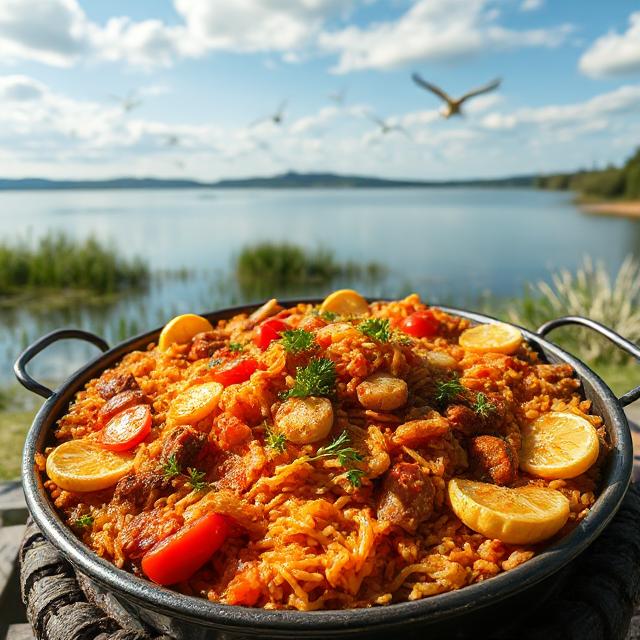
MPs - Food
research project
Albufera of Valencia:
Traditional Food Systems Under Pressure from Emerging Microplastic Pollution
Main-author: Ioana Caprar,
Faculty of Environmental Science, Babes-Bolyai University, Cluj-Napoca, Romania;
Research Institute of Water and Environmental Engineering (IIAMA), Polytechnic University of Valencia, Spain
-scratch of an ongoing project-
Abstract
The Albufera of Valencia, a coastal freshwater lagoon and Ramsar-designated wetland in eastern Spain, supports a long-standing coexistence of agriculture, aquaculture, and biodiversity conservation. It serves as a vital food production zone, with rice cultivation and inland lagoon fishing forming the backbone of its socio-ecological system. However, recent studies highlight the emergence of microplastic pollution as a significant environmental threat, with implications for ecological integrity, food safety, and local livelihoods. This article reviews the historical and functional significance of Albufera's food systems and discusses the risks posed by microplastic contamination in the context of sustainable resource management and circular economy transitions.
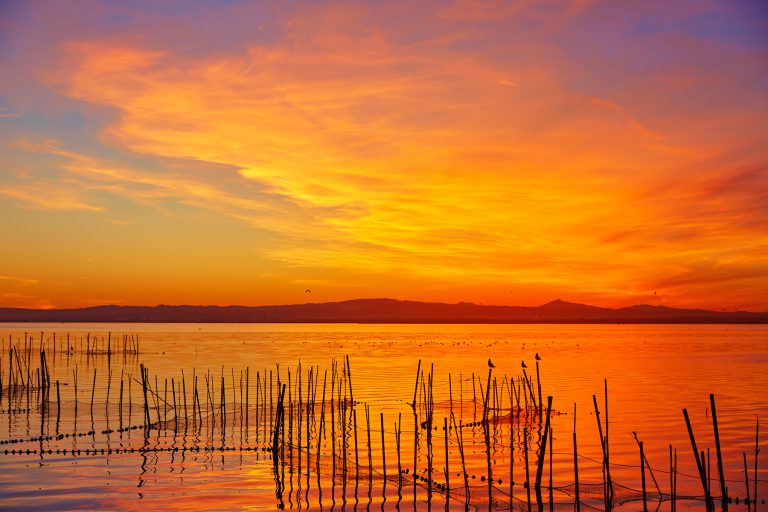
~~~~
1. Introduction
Wetland ecosystems represent critical interfaces between human and natural systems. The Albufera of Valencia exemplifies this dynamic interplay, historically functioning as a multifunctional landscape for food production, habitat provisioning, and cultural heritage. With global concerns over environmental degradation and the Anthropocene's signature pollutants, understanding how traditional food systems like those in Albufera respond to contemporary challenges is essential. One such challenge—microplastic pollution—demands urgent interdisciplinary attention.
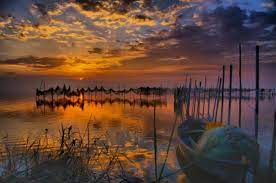
~~~~
2. Agricultural Production and Water Management
Albufera's surrounding floodplains are intensively managed for the cultivation of Oryza sativa (rice), a practice dating back to the 18th century. The traditional rice farming methods involve controlled flooding of fields that align with wetland hydrological cycles and migratory bird patterns. These practices contribute significantly to regional food security and cultural identity, with local rice varieties forming the basis of emblematic dishes such as paella Valenciana.
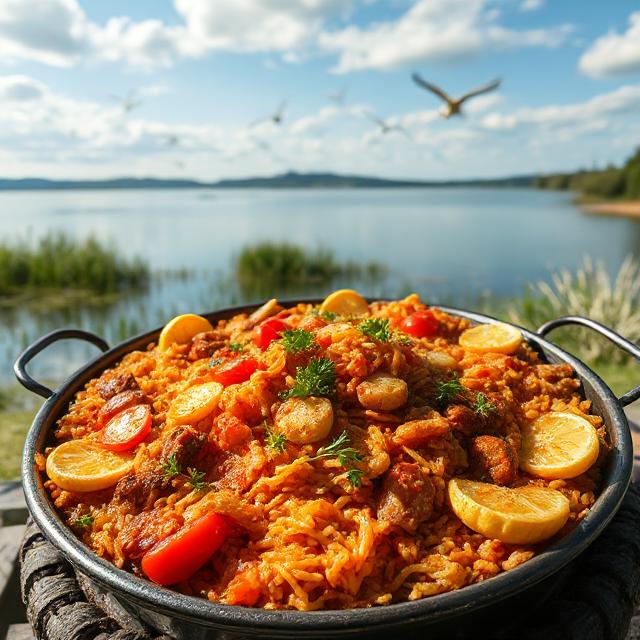
However, the intensification of agriculture in recent decades has led to increased reliance on agrochemicals. Pesticide residues and nutrient runoff are frequently cited in water quality assessments as contributing factors to eutrophication and ecosystem stress within the lagoon (Martínez-Eixarch et al., 2018). While these concerns have been widely studied, less attention has been paid to the cumulative and synergistic effects of newer contaminants, particularly microplastics.
~~~~
3. Inland Fisheries and Traditional Knowledge
In addition to agriculture, the lagoon supports a small-scale, artisanal inland fishery. Species such as European eel (Anguilla anguilla) and mullet (Mugilidae) are harvested using time-honored techniques passed down through fishing cooperatives (cofradías). These fisheries not only provide economic value but also contribute to the region's intangible cultural heritage.
Fishing activity in Albufera is highly sensitive to water quality fluctuations, sedimentation patterns, and biological disruptions. The increasing presence of microplastics raises concerns about trophic transfer of contaminants and the bioaccumulation of plastic-associated toxins in edible fish tissues, thereby threatening both ecological and human health.
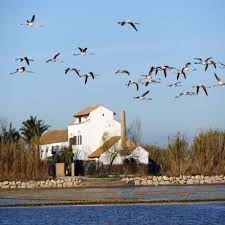
~~~~
4. Microplastics: Sources and Ecotoxicological Concerns
Microplastics are defined as plastic particles smaller than 5 mm, arising from the degradation of macroplastics or directly introduced through microbeads, synthetic textiles, and agricultural plastics. In wetland systems such as Albufera, microplastic particles are introduced via multiple pathways: urban wastewater discharge, runoff from surrounding agricultural lands (e.g., plastic mulch), pesticides and agrochemicals, tourism, and atmospheric deposition.
Recent monitoring efforts in Mediterranean wetlands indicate that microplastics are present in both sediment and water columns, as well as in the digestive tracts of aquatic organisms (González-Fernández et al., 2021). Their small size facilitates ingestion by filter feeders and benthic invertebrates, leading to potential biomagnification across trophic levels.
In food-producing wetlands, this raises complex questions:
- How do microplastics affect nutrient cycling?
- What are the long-term effects on fish and crop quality?
- What are the implications for food safety regulations and consumer health?
~~~~
5. Toward Circular and Resilient Food Systems
The challenges faced by Albufera reflect broader tensions in food systems globally—between tradition and modernization, productivity and sustainability, conservation and economic viability. Addressing microplastic pollution requires integrated responses that include:
- Enhanced monitoring frameworks for plastics in freshwater-agricultural interfaces
- Regulatory controls on agricultural and urban plastic use
- Restoration ecology approaches to buffer zones and sediment traps
- Circular innovation, such as biodegradable farming inputs and community-based recycling initiatives
Furthermore, the preservation of local knowledge and participatory governance structures will be key in designing context-specific solutions that are both ecologically and socially resilient.
~~~~
6. Conclusion
Albufera of Valencia stands at a critical juncture. As a living laboratory of traditional agri-food systems, it offers a rich context for understanding the interplay between heritage practices and emergent environmental stressors. The presence of microplastics in its waters is a call to action for interdisciplinary research and policy innovation. Safeguarding this landscape requires harmonizing food production with ecosystem stewardship — a challenge that mirrors the broader goals of sustainable development and circular economy transitions in the European context.
~~~~
References
- Martínez-Eixarch, M., et al. (2018). "Agrochemical impacts on Mediterranean rice wetlands: Lessons from the Albufera." Journal of Environmental Management, 220, 123–134.
- González-Fernández, D., et al. (2021). "Occurrence and distribution of microplastics in Spanish inland waters." Science of the Total Environment, 753, 142218.
Ioana Caprar, 28.05.2025
